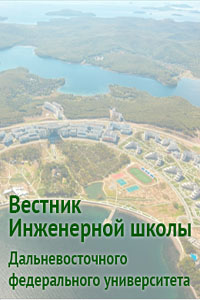Design features of hovercraft to increase the efficiency of the destruction of the ice cover by the resonant method
DOI:
https://doi.org/10.24866/2227-6858/2023-4/3-14Keywords:
hovercraft, structures, ice cover, bending-gravity waves, destructionAbstract
The methods of increasing the efficiency of the destruction of the ice cover by the resonant method using hovercrafts equipped with additional structural elements are considered. Additional elements allow you to create additional physical impact on the ice cover, thereby increasing the destructive ability of hovercrafts. The presented review is based on the patents of the Russian Federation for inventions developed and protected by the authors.
Downloads
Published
Issue
Section
License
Copyright (c) 2023 Far Eastern Federal Univercity: School of Engineering Bulletin

This work is licensed under a Creative Commons Attribution 4.0 International License.

